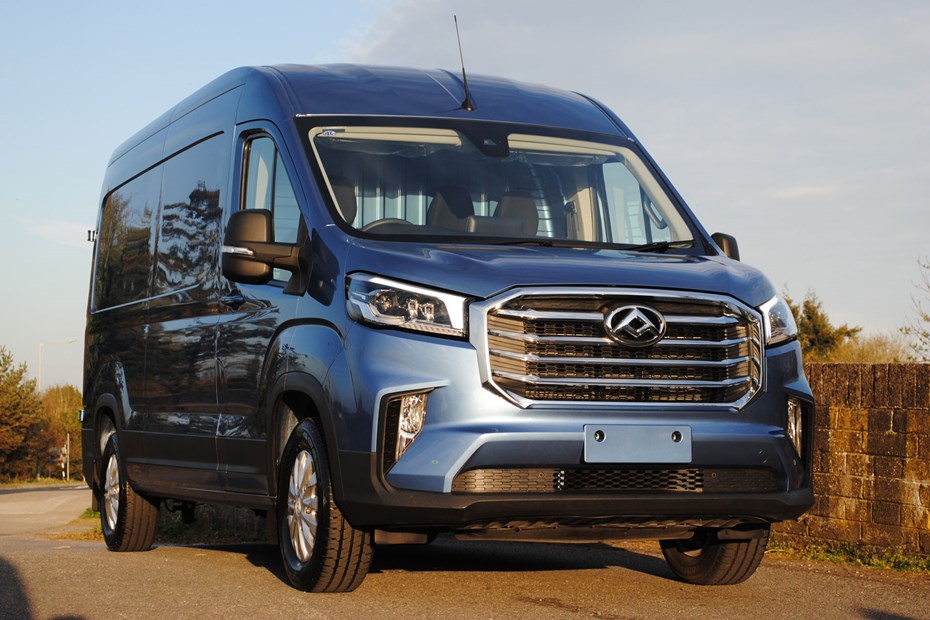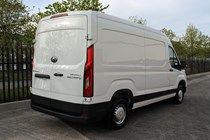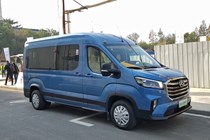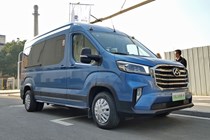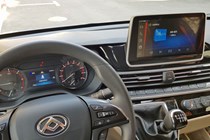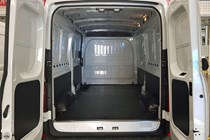Following a full rebranding process that sees LDV become Maxus, the firm has now launched its new Deliver 9 large van into the UK market via an online press conference. An all-new replacement for the aging LDV V80, the Maxus Deliver 9 was supposed to be unveiled at the 2020 CV Show in April, but the coronavirus pandemic forced the cancellation of this and the firm to rethink, causing a slight delay.
Still, the Deliver 9 is here now, in stock at UK importer the Harris Group’s base of operations in Dublin, Ireland. And though we haven’t been able to drive it on UK roads just yet – thanks again to COVID-19 – we have sampled the van (very briefly) in China, when we visited an array of the Chinese brand’s facilities in December 2019.
The UK specification of this van is impressive, with plenty of standard equipment even on the base model. Not to mention an ultra-modern 2.0-litre turbodiesel engine with features that aim to help you avoid diesel particulate filter failures, and a choice of front-wheel drive or rear-wheel drive.
The designers are clearly big fans of the Ford Transit, but will potential buyers be bothered by such copycat behaviour if it can muster much of that leading rival’s capability at an attractive price? Compared with the V80 it seems to be an enormous step forward, and example pricing for a long-wheelbase, high-roof rear-wheel drive Deliver 9 is £30,231 (excluding VAT).
Maxus Deliver 9? Wasn’t it supposed to be called the LDV V90?
We’d even expected it to simply be called the V80 in the initial stages – but as it turns out, production of that old stager will continue alongside the new model, at least initially.
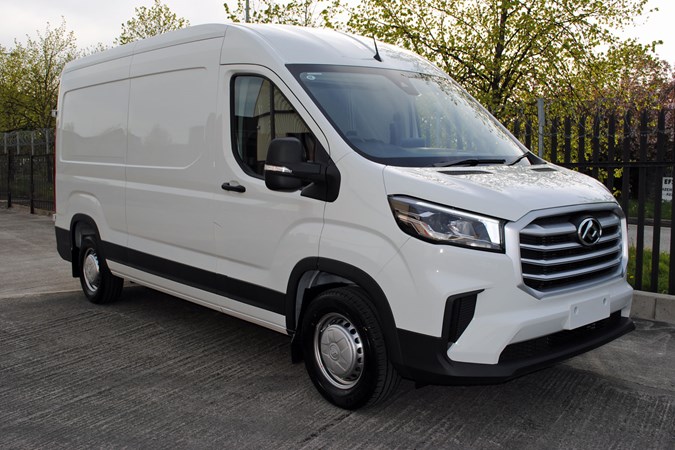
In such a situation, V90 would be the obvious new moniker, and is in fact what the new van is called in its home market of China (the LDV brand was acquired by Chinese automotive giant SAIC in 2010).
In the UK and Europe, however, where Volvo already sells a car called the V90, the decision has apparently been taken to use a new Deliver 9 naming convention – matching up with the smaller eDeliver 3 electric van that’s also now on sale here.
What are we supposed to make of that styling?
They – whoever ‘they’ are – often say imitation is the sincerest form of flattery. And although we doubt Ford’s intellectual copyright lawyers are going to be quite so charmed by the situation, the similarity of the Deliver 9 to the Transit just avoids being an outright clone, thanks to some unique details.

Notable differences include an eight-sided grille – one of the latest design cues on parent brand Maxus’s Chinese-market passenger cars – and wheelarch details that look like they’ve been borrowed from an Iveco Daily. Ahem.
What’s it like on the inside?
There’s heavy evidence of an unhealthy obsession with the latest Transit facelift in the cab of the Deliver 9 as well – though to be fair there are design elements that look like they’ve come from Audi and Volkswagen passenger cars too.
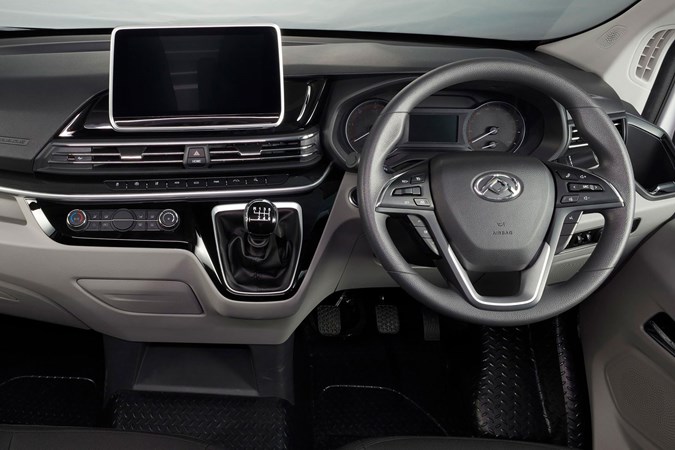
Regardless, the difference between this and the LDV V80 – both inside and out – is like night and day. It’s hard to believe they’re just a generation apart, until you remember the older van has origins that date back to 2004.
With piano black and faux carbonfibre trim finishes for UK models, the Deliver 9’s interior appears to now be one of the smartest and most car-like of any large van on sale. We have concerns that this will make it less practical inside than some rivals, the sense that you’re sitting in a surprisingly classy product is undeniable.
So is the Deliver 9 all new?
Yes – brand new platform, brand new engine. We expect it uses a few of the same bolts somewhere, but otherwise the Deliver 9 is apparently not related in the slightest bit related to the V80.
What’s the new engine?
It’s a 2.0-litre turbodiesel unit known internally as the SAIC Pi engine – that’s pi as in the mathematical constant (3.14159265… etc) rather than something you get down at Greggs.
Replacing the old 2.5-litre chugger in the V80, it’s SAIC’s own design, meets the latest Euro 6d emissions requirements and matches a number of rival European power plants with its feature set.
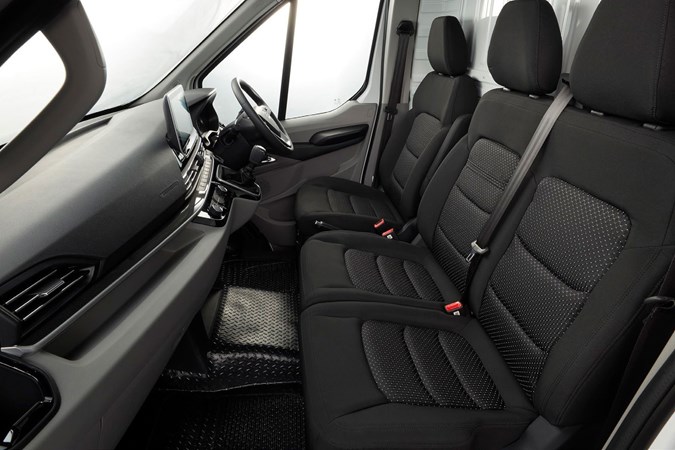
A few highlights of this include the 2,000-bar diesel injection pressure, the high-efficiency off-set crankshaft, dual-loop EGR (exhaust gas recirculation) system and two-stage oil pump, the refinement-boosting double balancer shafts, and the power enhancing dual-stage turbocharging and water-cooled intercooler.
In the Deliver 9 this adds up to 163hp and 375Nm of torque, though the engine is capable of producing up to 214hp and 480Nm, as it does in the Maxus pickup that’s also due to join the UK range in 2021.
How does any of that help with diesel particulate filters?
What the Maxus Deliver 9 has that rivals don’t is a ‘Regen’ button, which you can press to run a cleaning cycle on the diesel particulate filter (DPF). In theory this should prevent it getting clogged up and causing the van to stop working.
DPF failures are a major source of irritation in the van world, especially among operators who do short stop and start journeys, such as delivery and courier services. A simple button press aims to solve this issue once and for all in the Deliver 9.
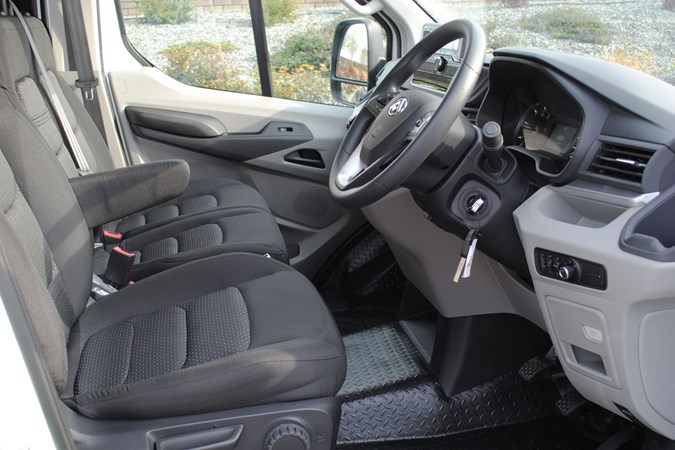
What’s more, on higher-specification Luxury models which come with a central 10.0-inch touchscreen, there’s a display option that shows you how full the DPF is getting so you can keep track of exactly when you might need to clear it.
This leaves us wondering why no other van maker has introduced something similar. We await further info on what repeated use of the system will do to the life of the engine oil, however.
What’s the UK specification like for the Maxus Deliver 9?
The Deliver 9 will come in two versions here: standard and Luxury. The standard model includes the following standard equipment highlights:
- > Autonomous emergency braking
- > Air-conditioning
- > Rear parking sensors
Upgrade to the Luxury model, and you’ll also get extras such as:
- > Blindspot monitors
- > Full LED headlights
- > Keyless entry
- > Touchscreen infotainment system with Apple CarPlay and Android Auto
All models also feature electrically-assisted power steering, rear doors that open 260 degrees and a choice of Normal, Eco and Power driving modes.
The overall structure is said to be 3.5 times stiffer than the V80s (though that can’t have been too hard, frankly), made from 54% high-strength steel and assembled using a process that includes 9.2m (!) of laser welding.
Yes, lasers.
How many different body sizes will there be?
In van terms there are three bodylengths (Short 5,180mm, Medium 5,546mm and Long 5,940mm), three roof heights (Medium 2,365mm, High 2,353mm and Extra-High 2,735mm) and three wheelbases (3,000mm, 3,366mm and 3,760mm) will be available.
There are a couple of longer chassis cab options for conversions, and from the spec info we’ve seen so far, only the longest van version is available with rear-wheel drive (RWD) – the rest are all front-wheel drive (FWD). All versions are 2,466mm wide, including the door mirrors.
How big is the load area?
Load space in the Deliver 9 van ranges from just over eight cubic metres to just under 13 cubic metres, with cargo loading lengths from 2,650mm to 3,413mm and cargo load space height from 1,724mm to 2,114mm. The overall loading width is 1,800mm, with 1,366mm between the wheelarches.
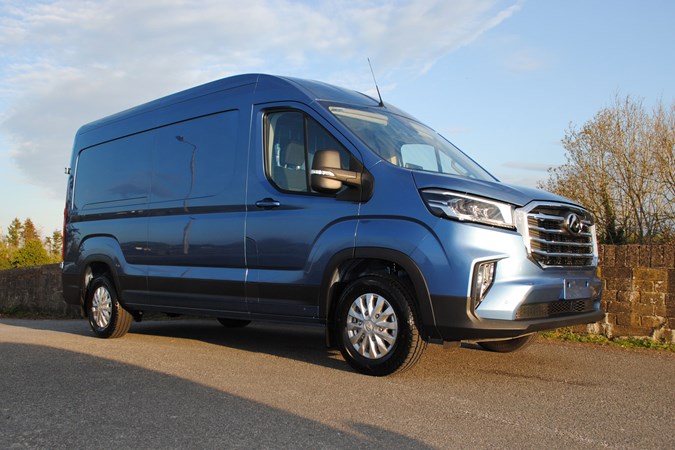
The side loading door is 1,075mm in width on the shortest vans, 1,269mm on the medium and long versions. The rear door opening is 1,570mm wide.
You get an easy-clean cargo space floor as standard, with LED lighting and electric side step also available.
What’s the payload rating of the LDV Deliver 9?
All UK models have a 3,500kg (3.5-tonne) gross vehicle weight (GVW) rating, the highest you can drive on a regular car licence.
Payload for the Maxus Deliver 9 van ranges from 1,110kg for the largest RWD version to 1,360kg for the smallest FWD model.
Braked towing capacity is 2,500kg for the smallest versions, 2,800kg for the rest of the range. Every model will tow 750kg unbraked.
You said you’ve driven the new Deliver 9?
Yes, but at once basically no. The test drive consisted entirely of piloting a rear-wheel drive minibus variant a short, straight route between two SAIC-Maxus factory buildings, a 90-degree right corner into a cul-de-sac to turn around and then back the other way, before performing what amounted to an extremely slow forward J-turn into a parking position at the side of the road.
As a measure of what the Deliver 9 will be like to drive in the UK, it told us almost nothing.
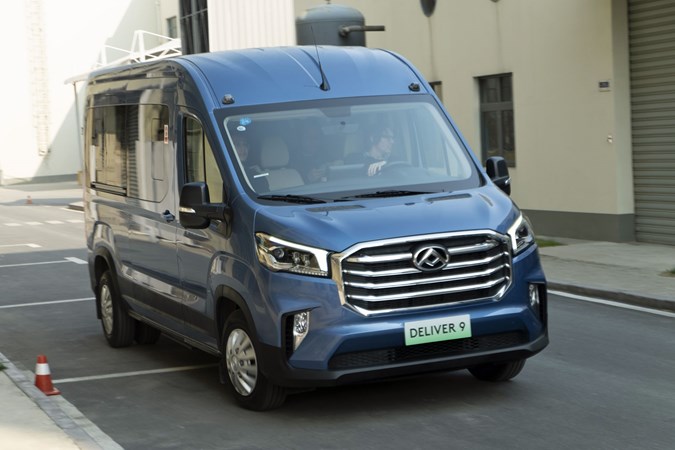
We say almost, because we were surprised by the heft and slight sense of inconsistency in the electric power steering system – which we were expecting to be as light and comfortingly wieldy as the similar system fitted to the Volkswagen Crafter (which was mentioned as a benchmark during one presentation).
Perhaps the dual rear wheel axle didn’t help. The manual gearshift action is also very long-winded compared with the likes of the Crafter, Transit and Mercedes Sprinter, if essentially fine. Noise and vibrations seemed well repressed – though given we were sampling a fully trimmed passenger carrying version that shouldn’t be a surprise.
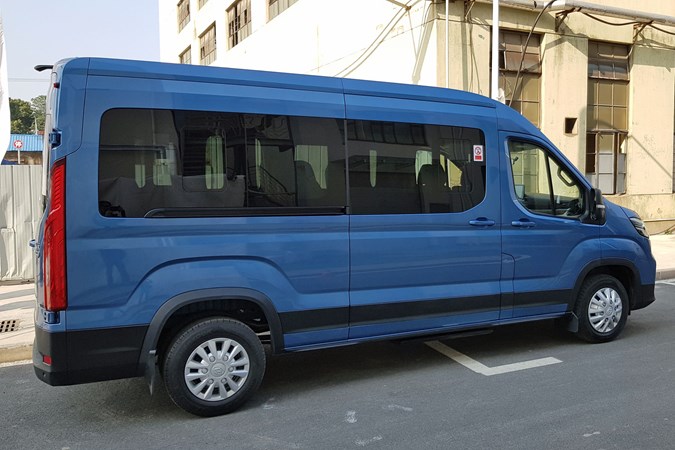
So far so fair-to-middling, then. We’ll need to drive it a lot more extensively to see how it really behaves, and are expecting to have the opportunity to do so soon.
Will there be an electric version of the Maxus Deliver 9?
Not immediately, but an electric van is most definitely in the plan. It will be called the Maxus eDeliver 9, be based on the front-wheel drive platform, and will replace the quietly successful EV80 – perhaps before the end of 2020, although we suspect 2021 for the UK is more likely.
When does the Deliver 9 go on sale and what does it cost?
We’ve only got example pricing for the RWD panel van at the moment, which starts at £30,231 excluding VAT. This should be one of the more expensive versions, so the Maxus Deliver 9 is set to be great value. Especially as it also comes with a five-year / 125,000-mile warranty and five years’ roadside assistance.
The new van is available to order now, with first customer deliveries expected in July 2020.
Also read:
>> Maxus eDeliver 3 electric van full details
>> LDV reviews on Parkers Vans and Pickups
Just so you know, we may receive a commission or other compensation from the links on this website - read why you should trust us.


